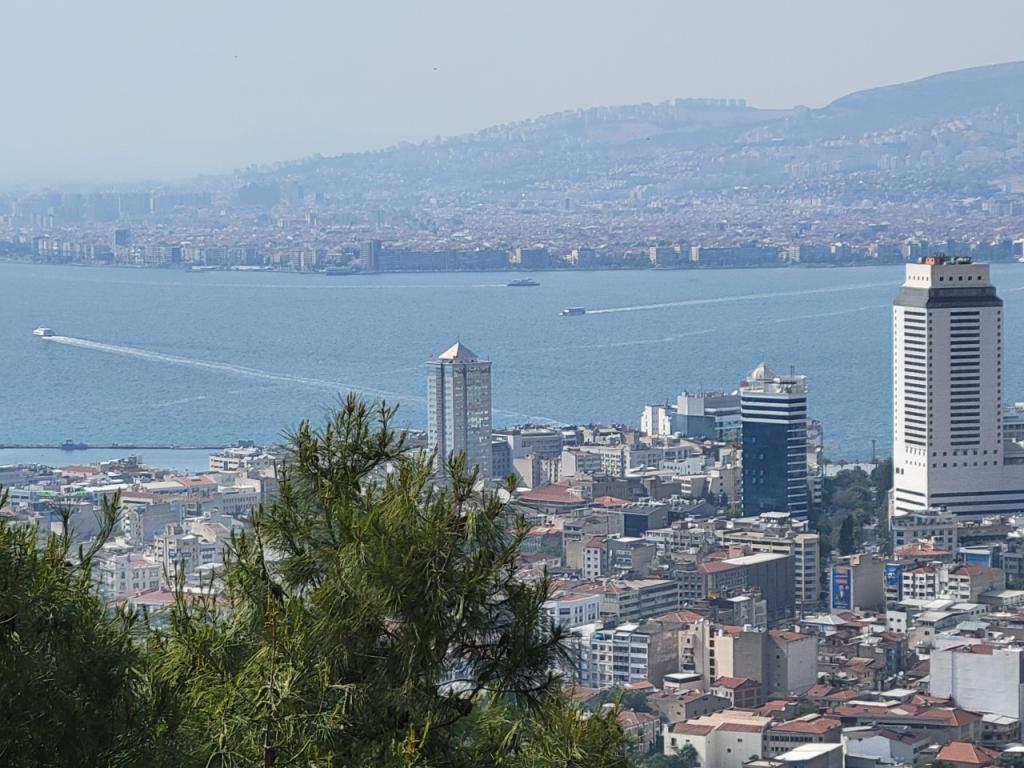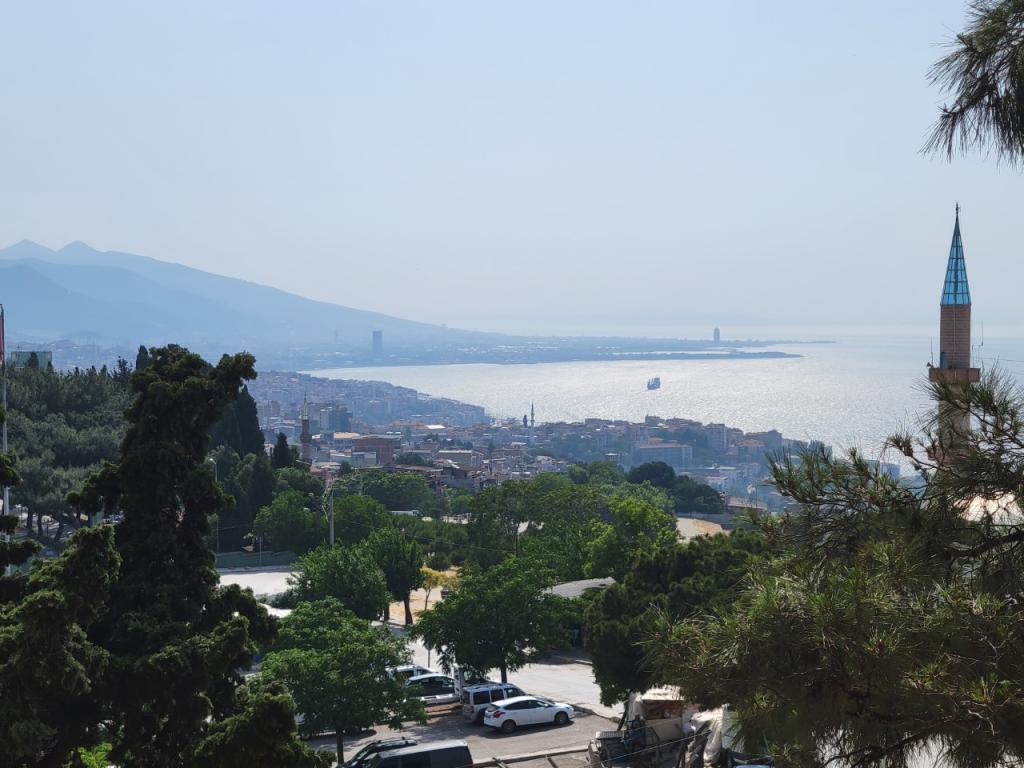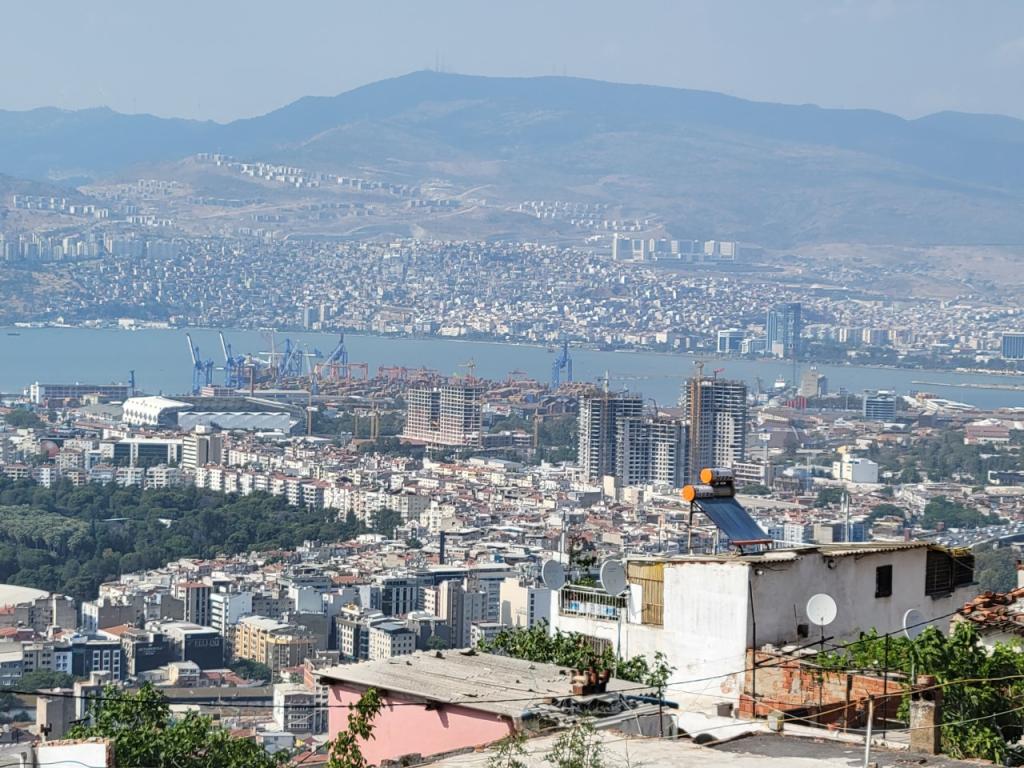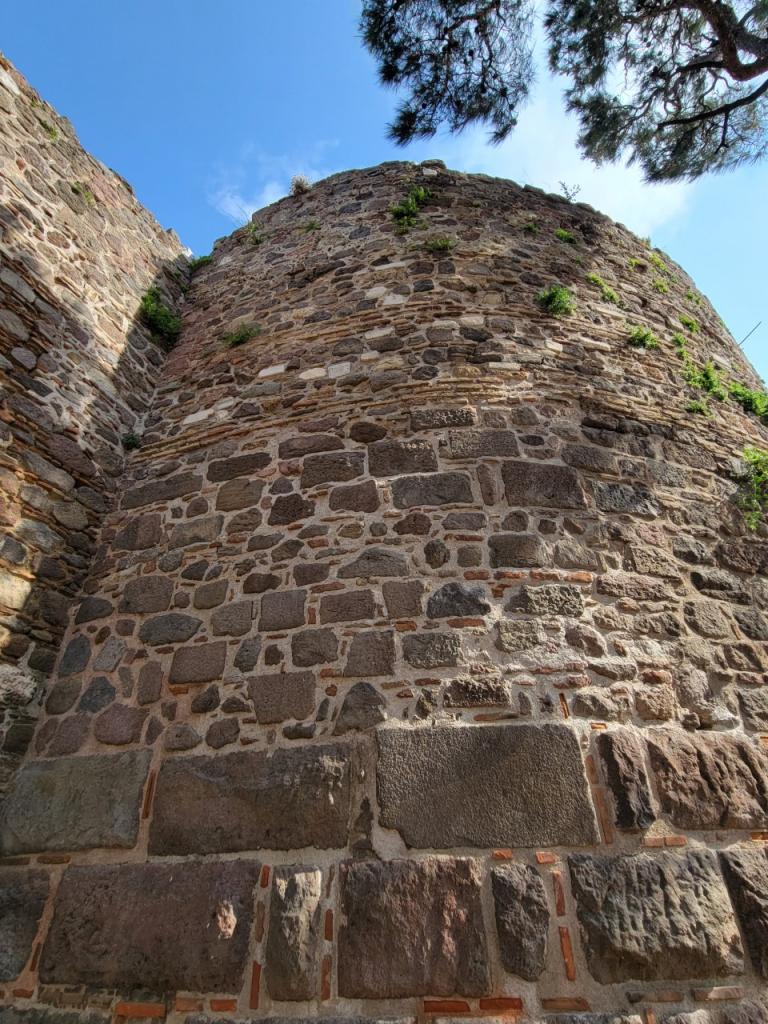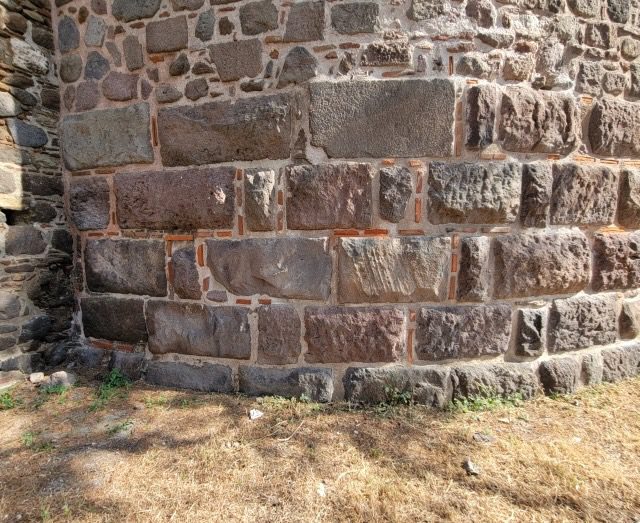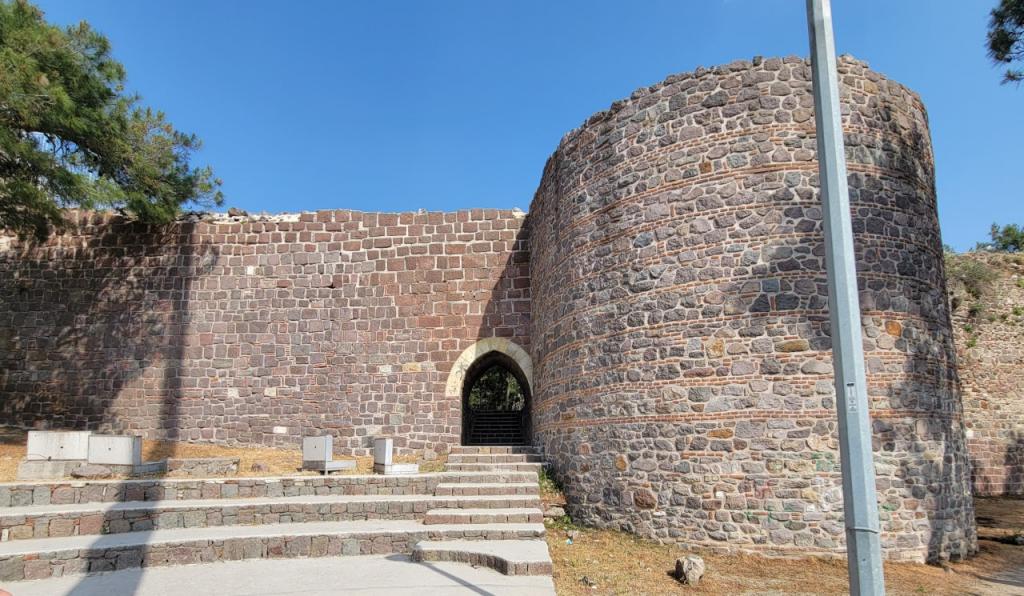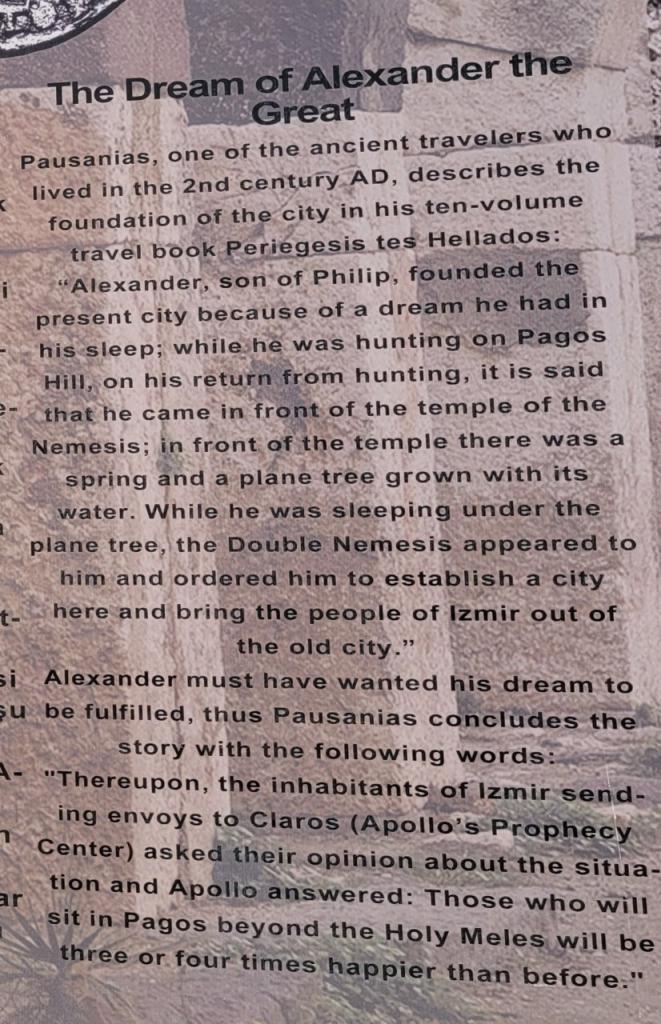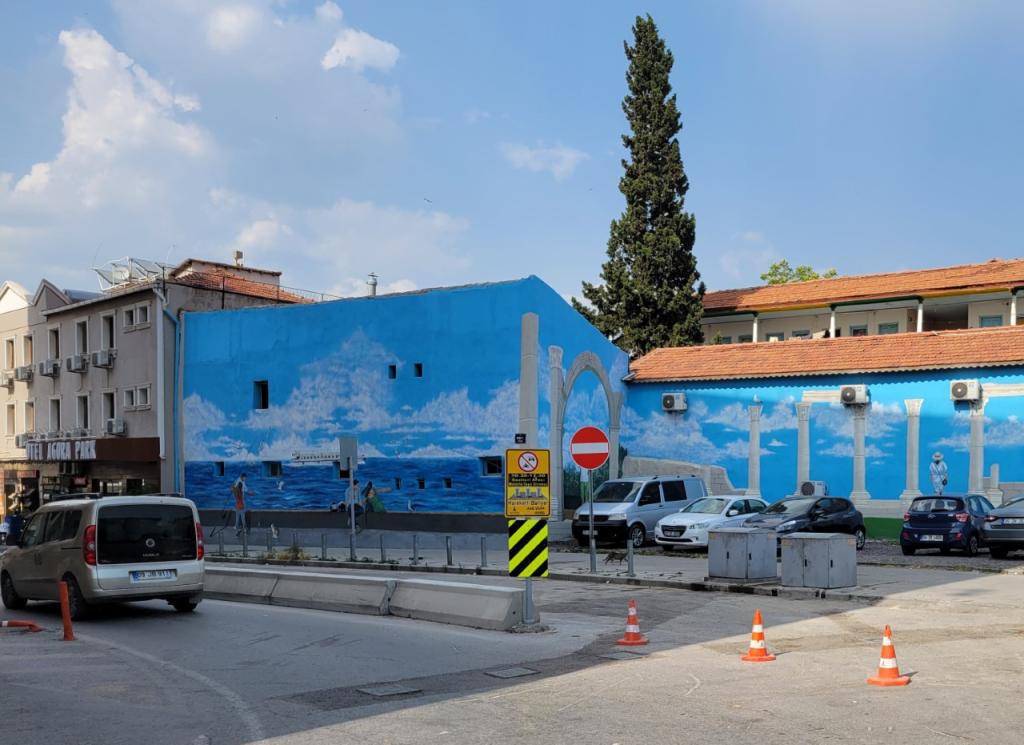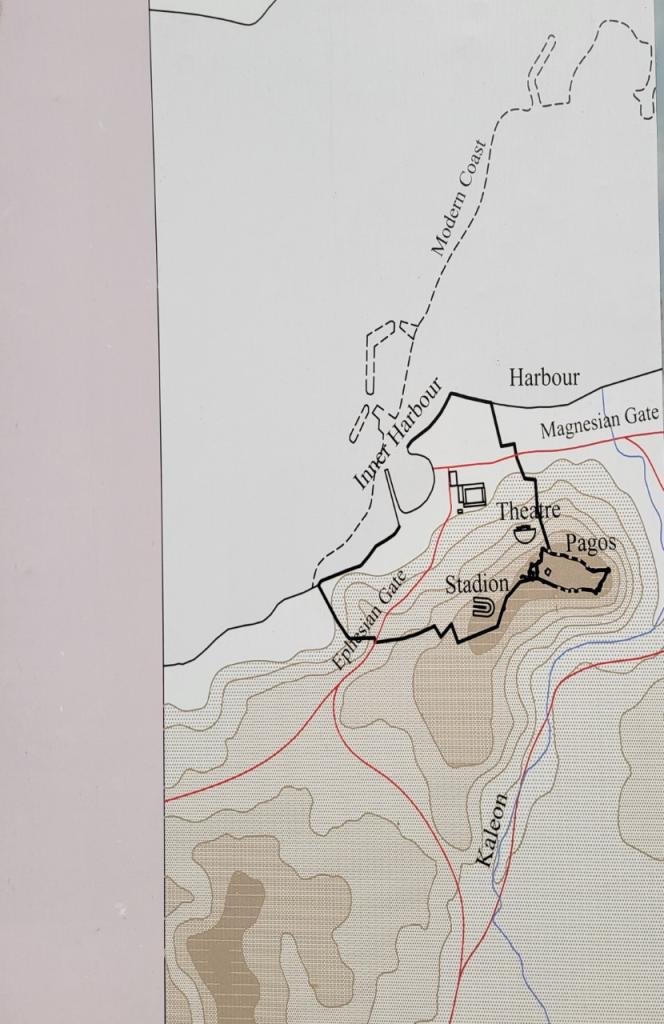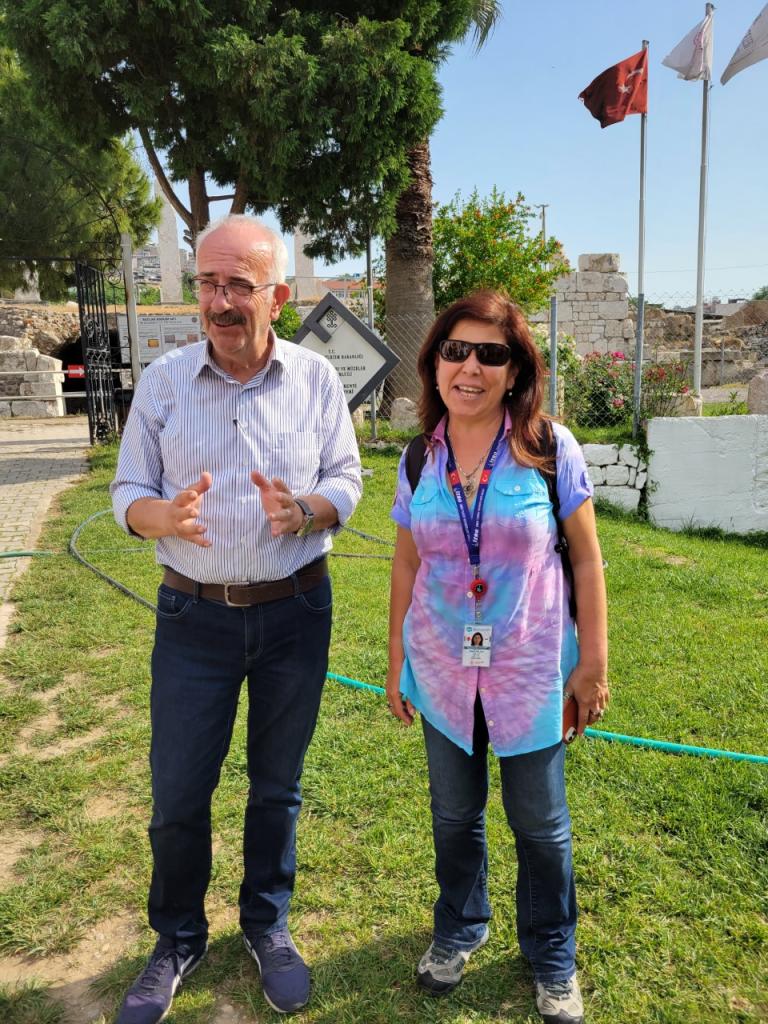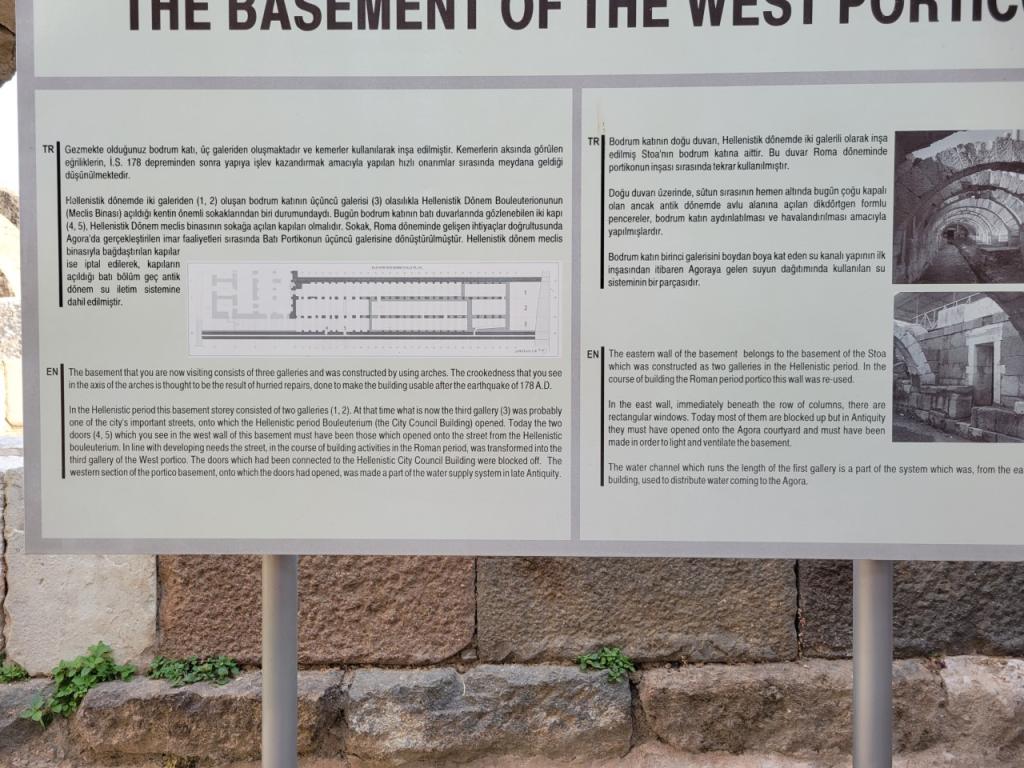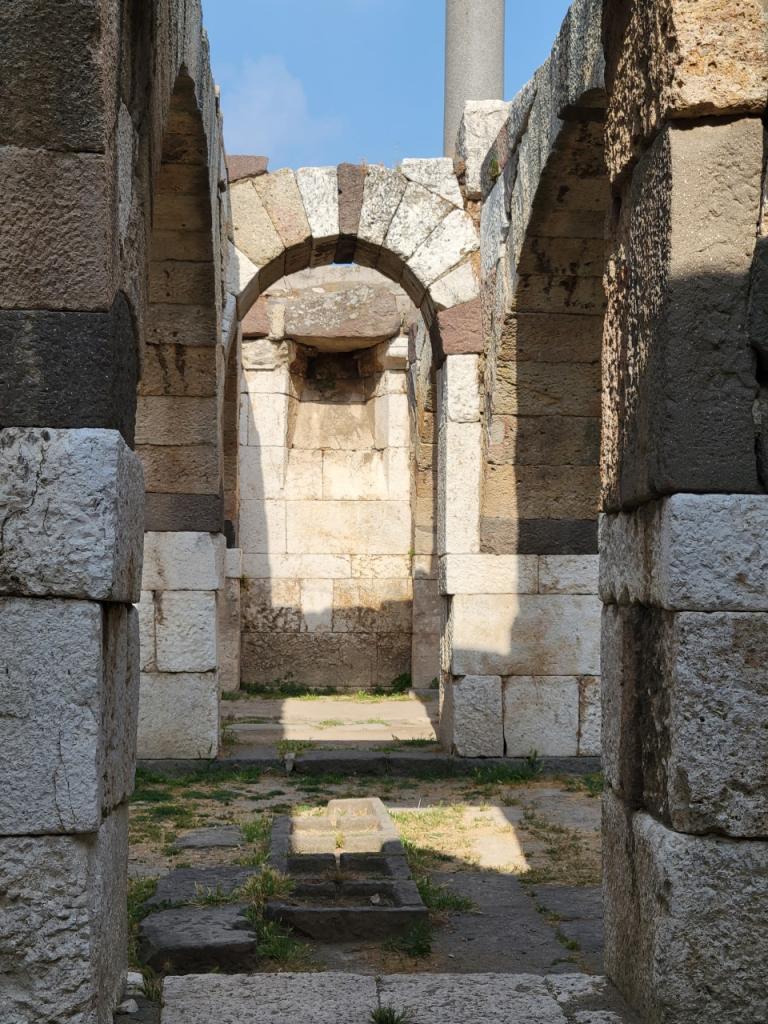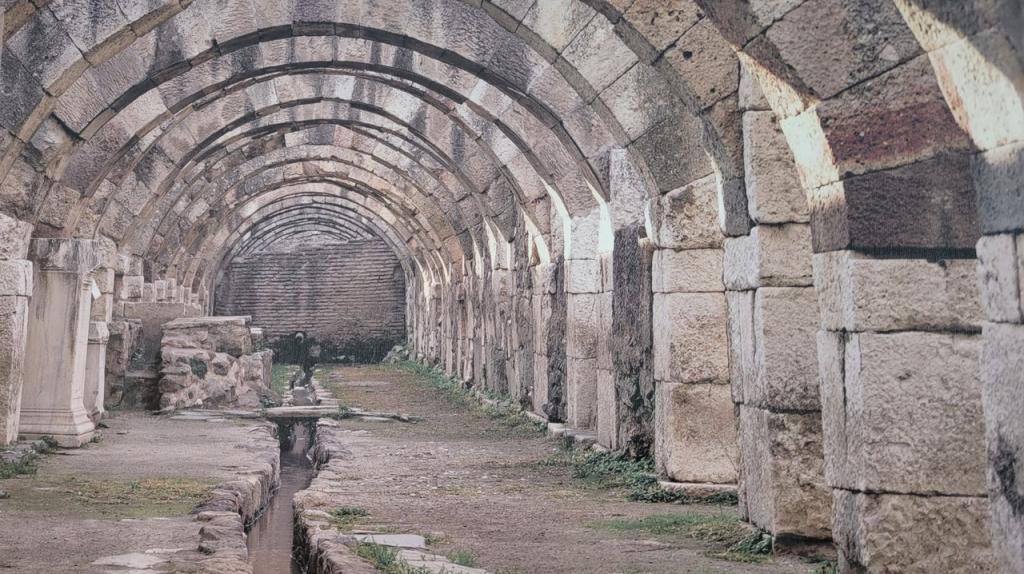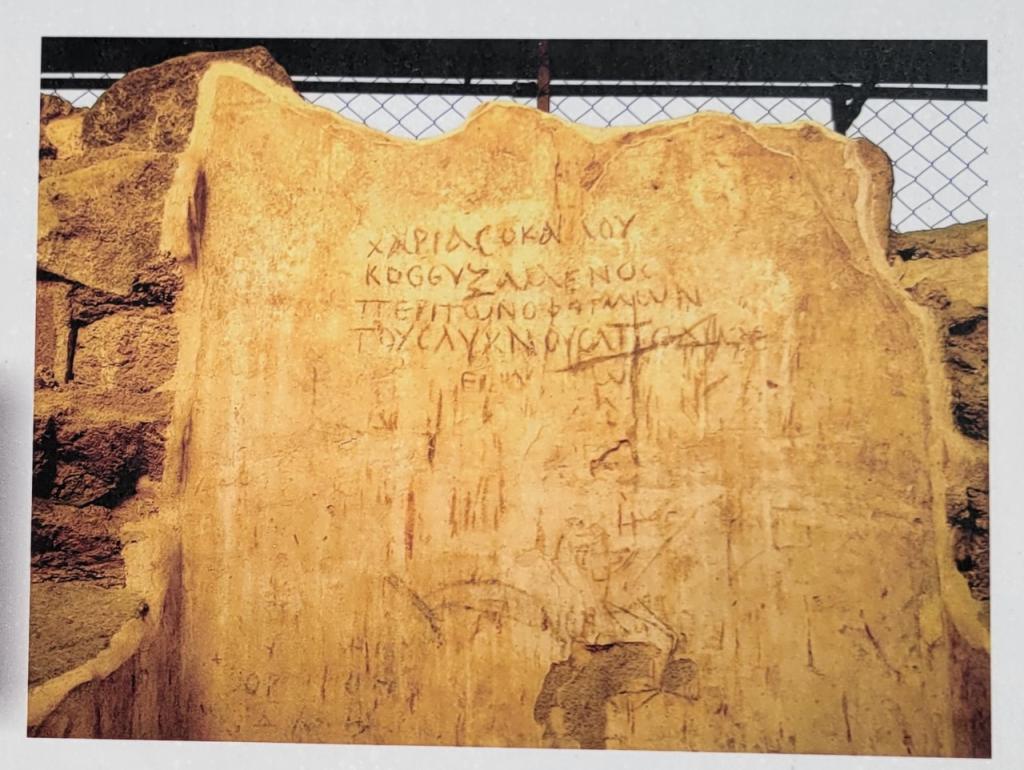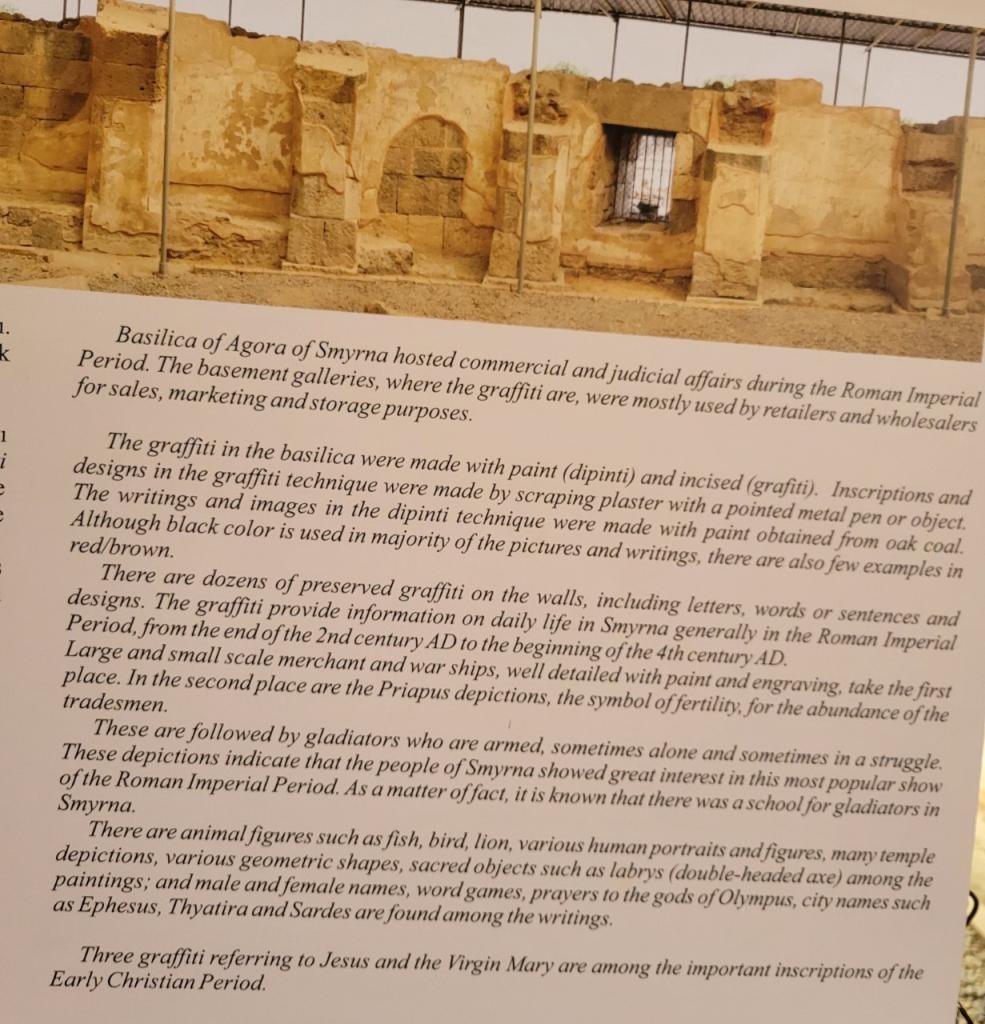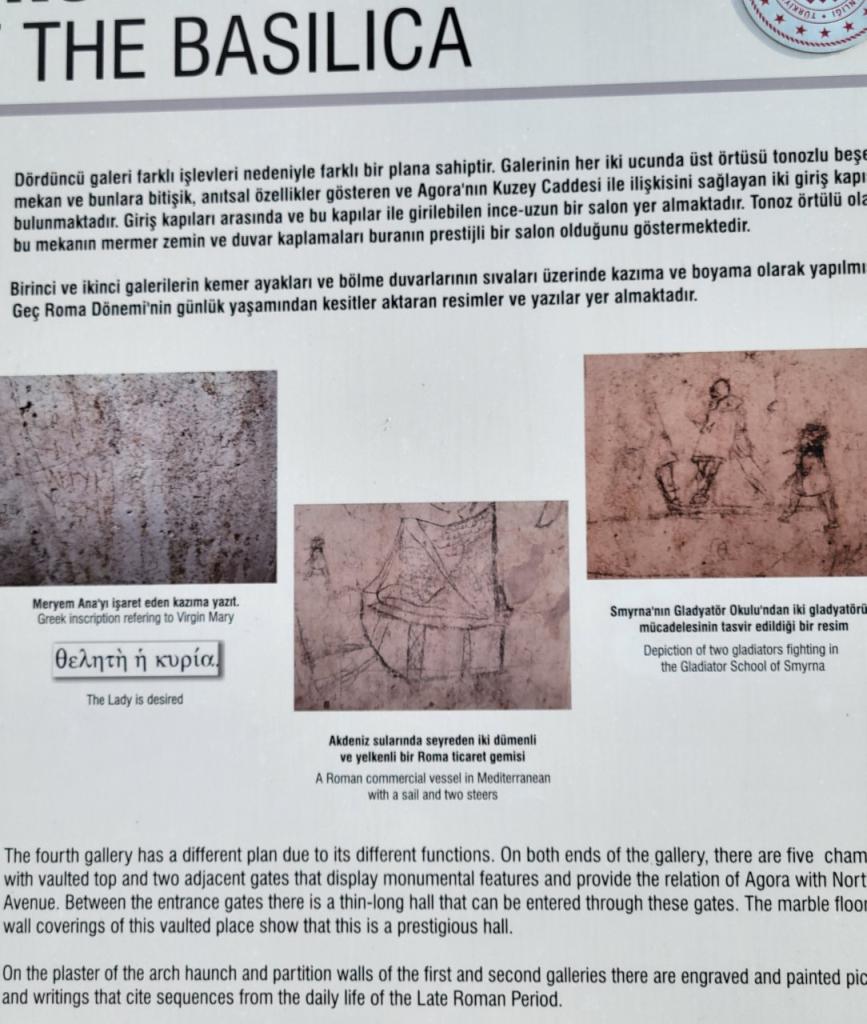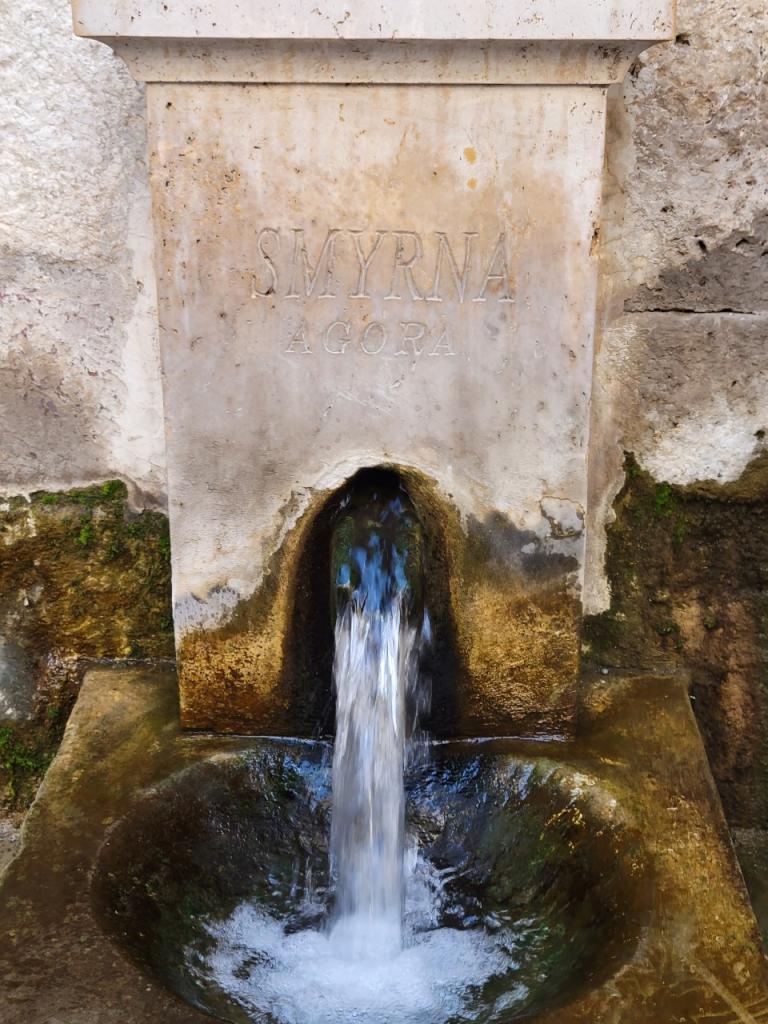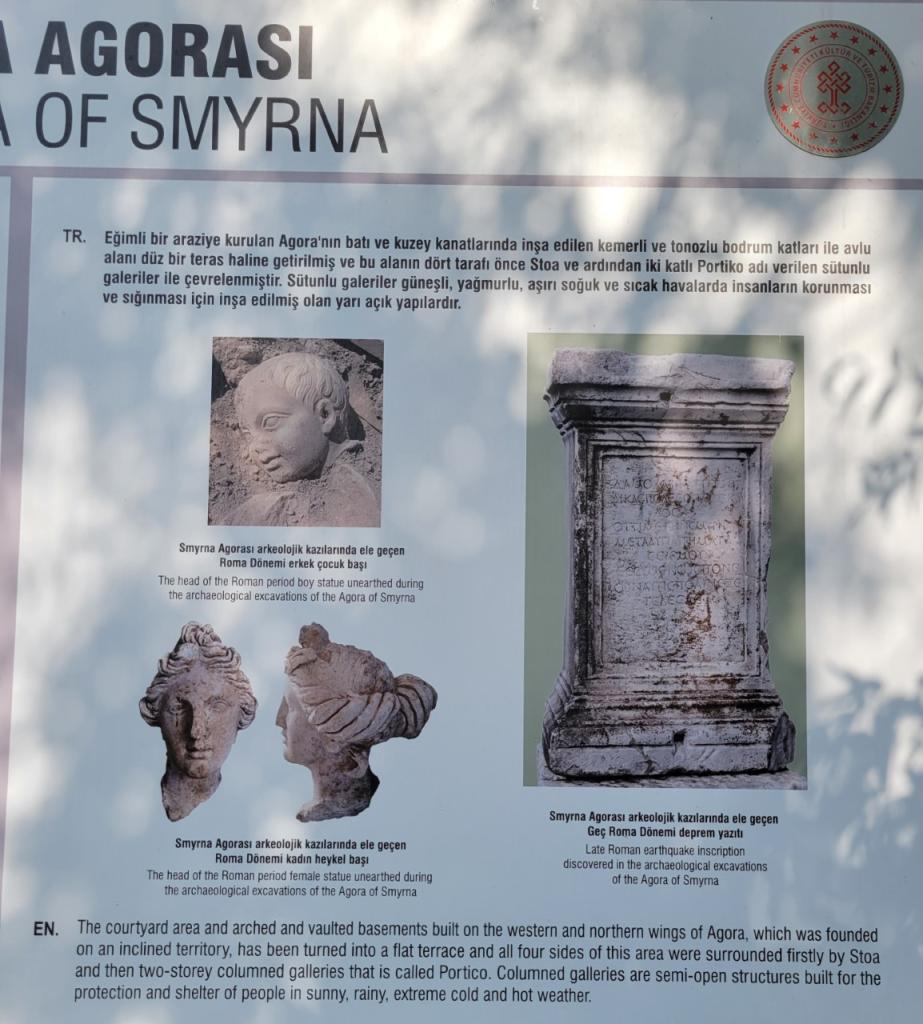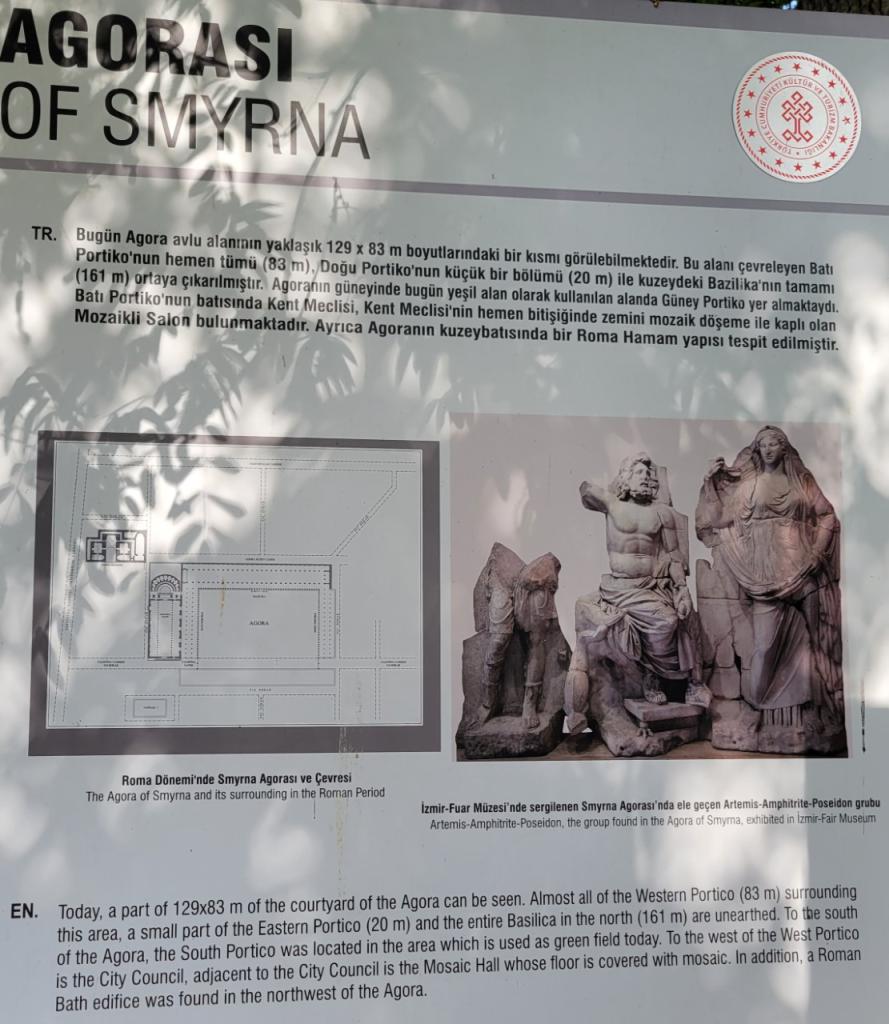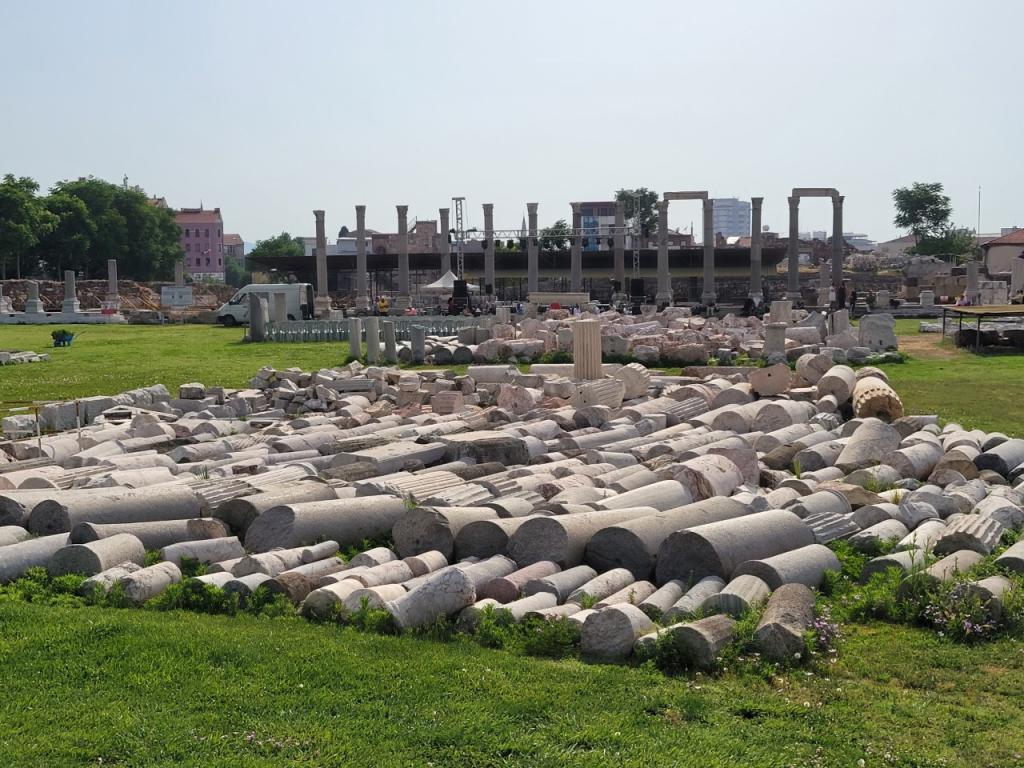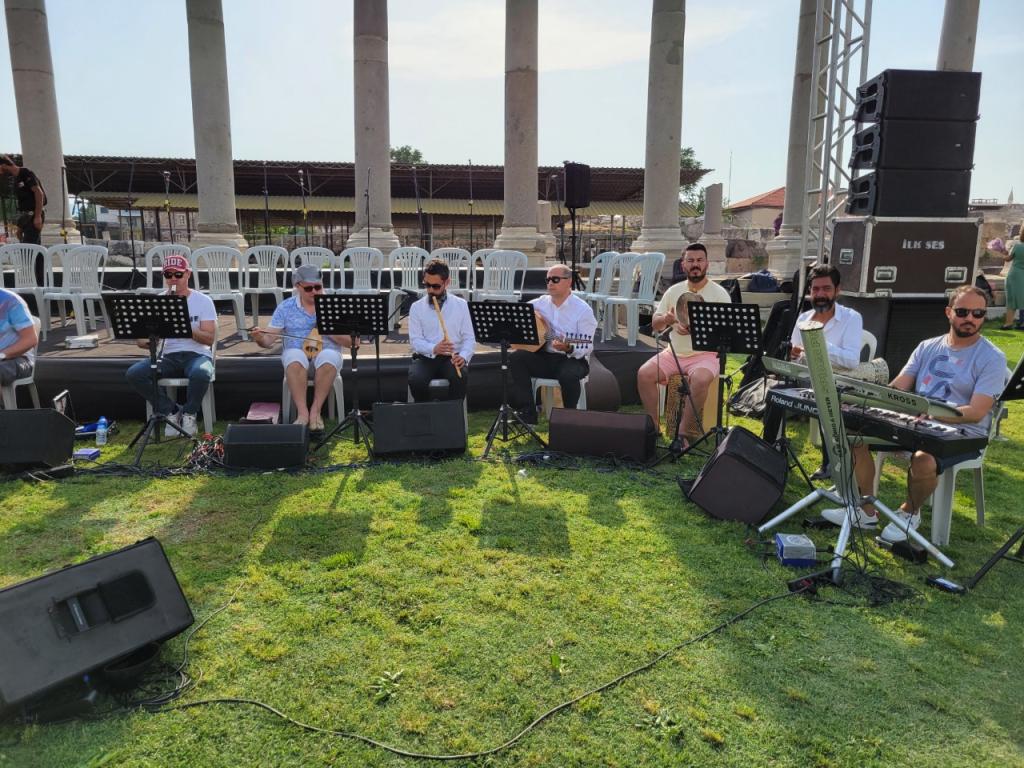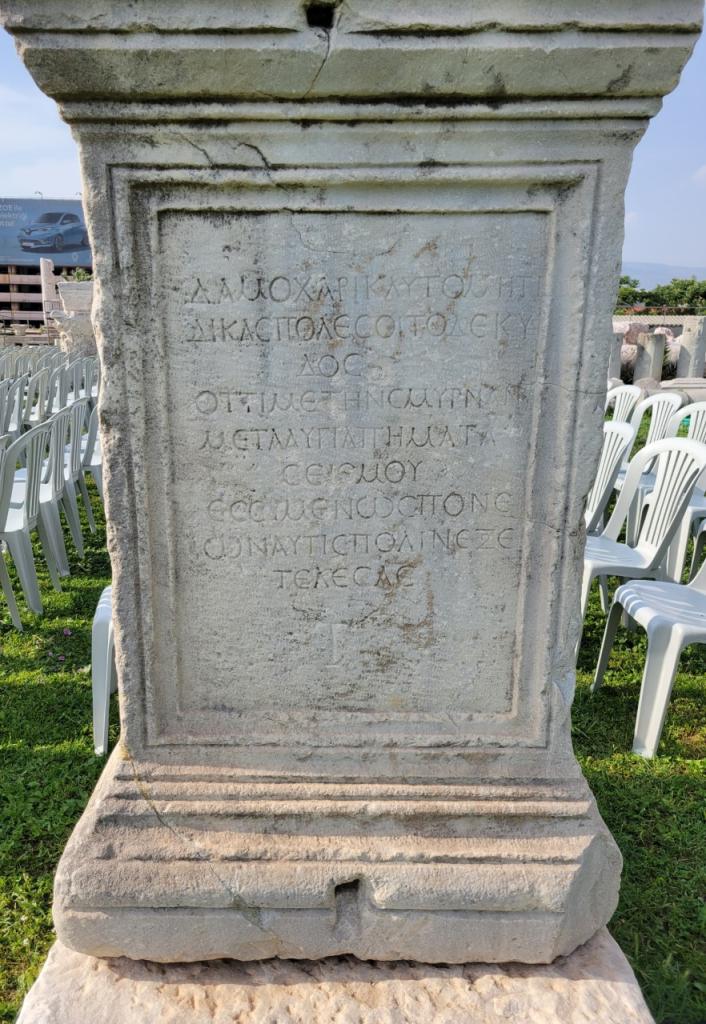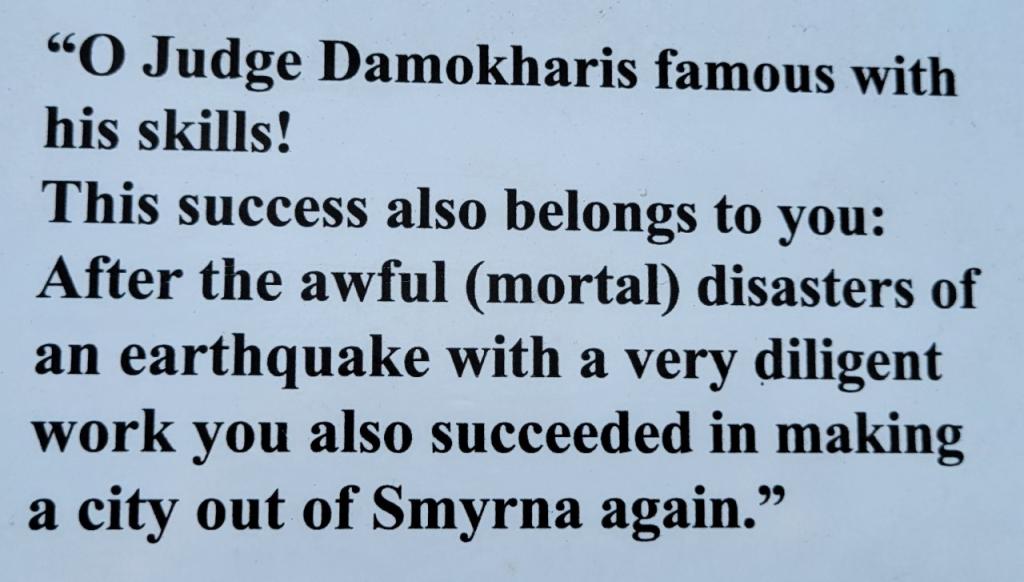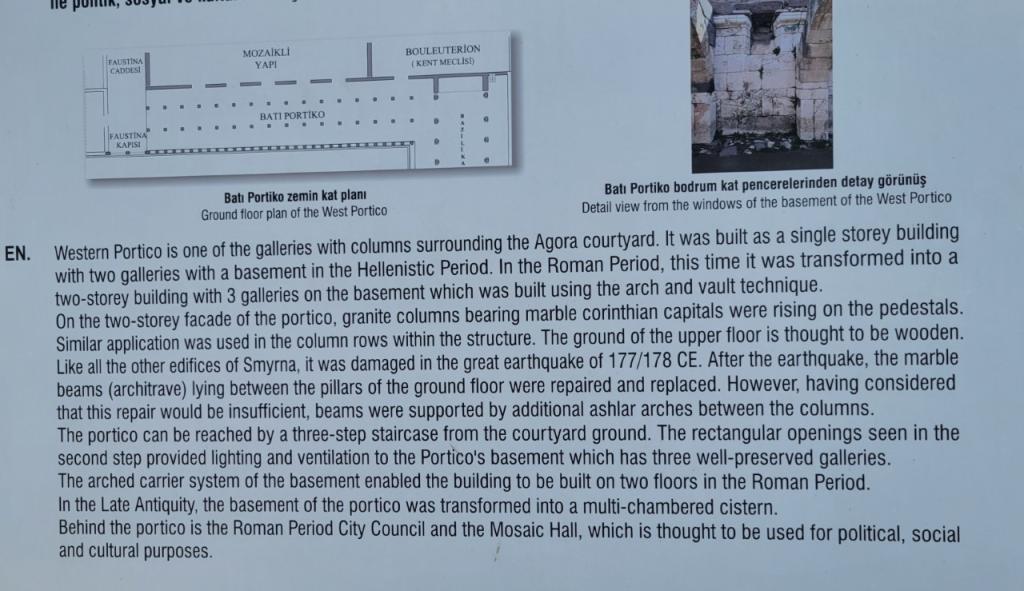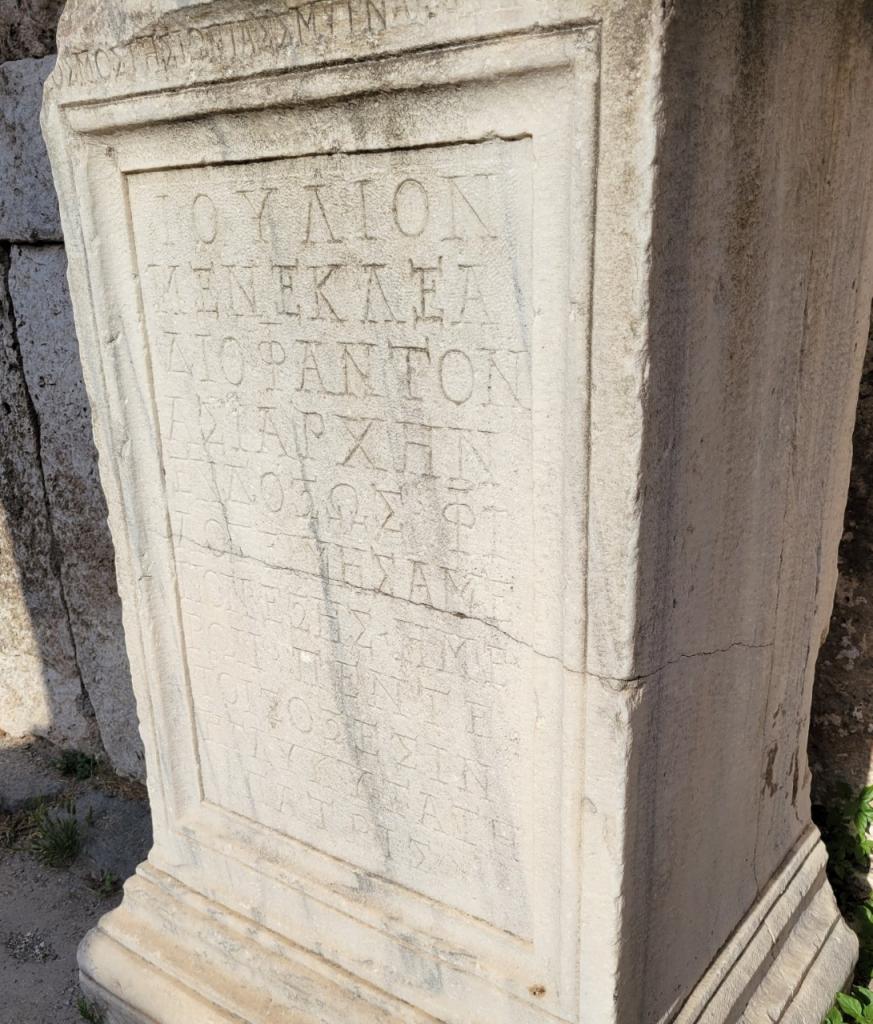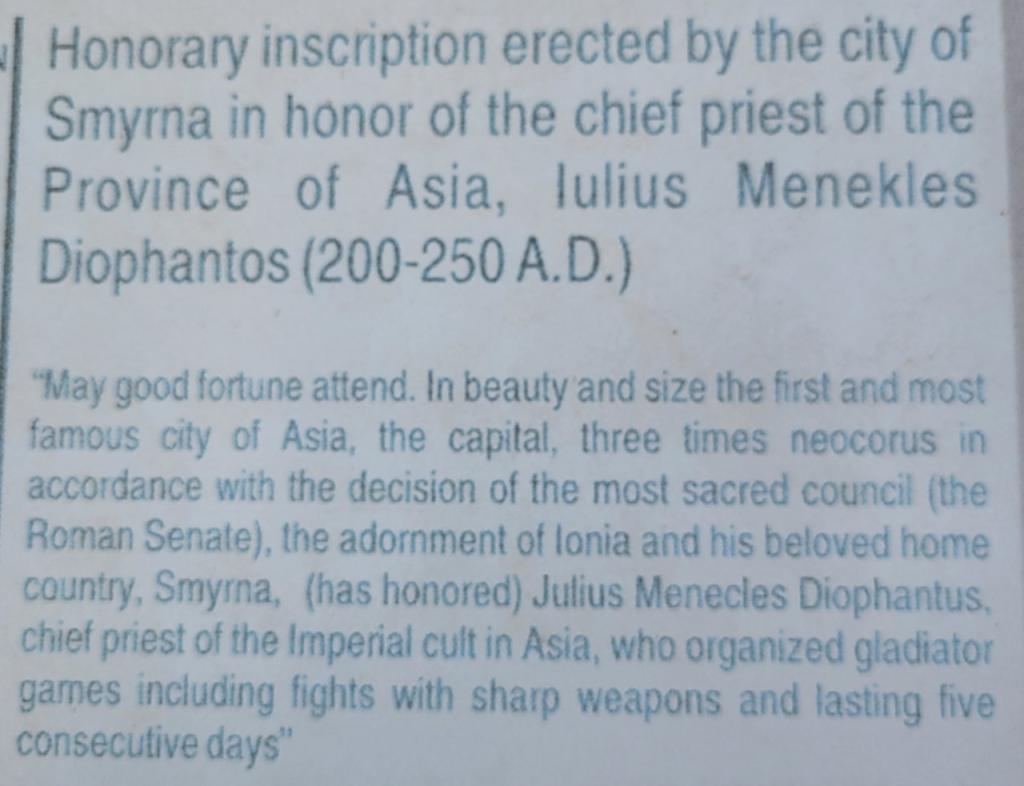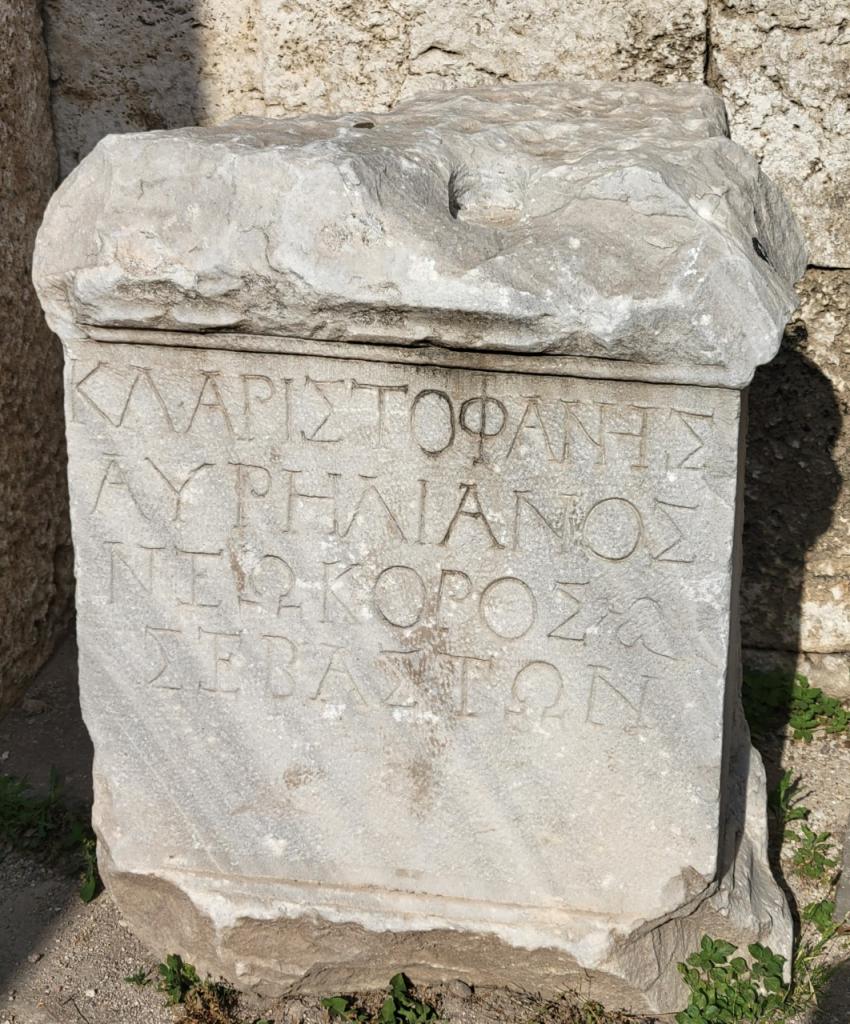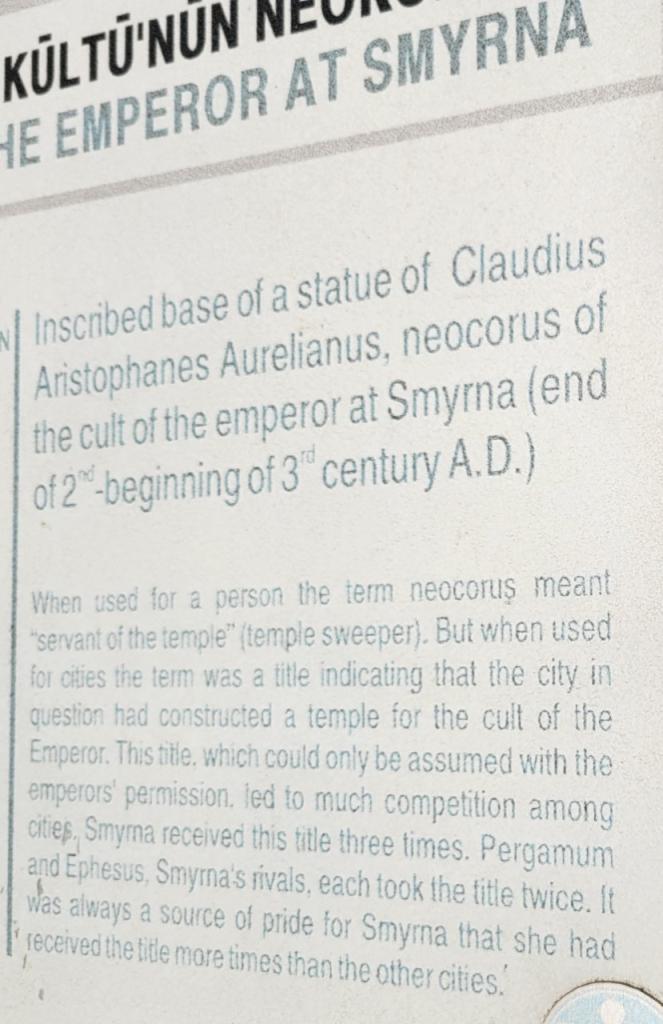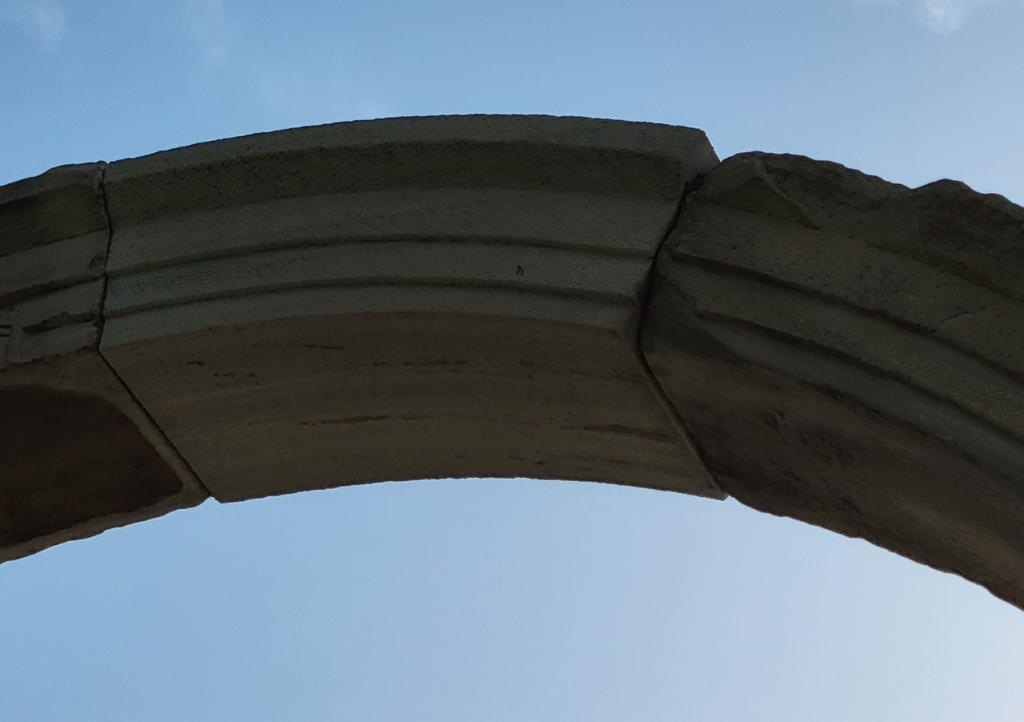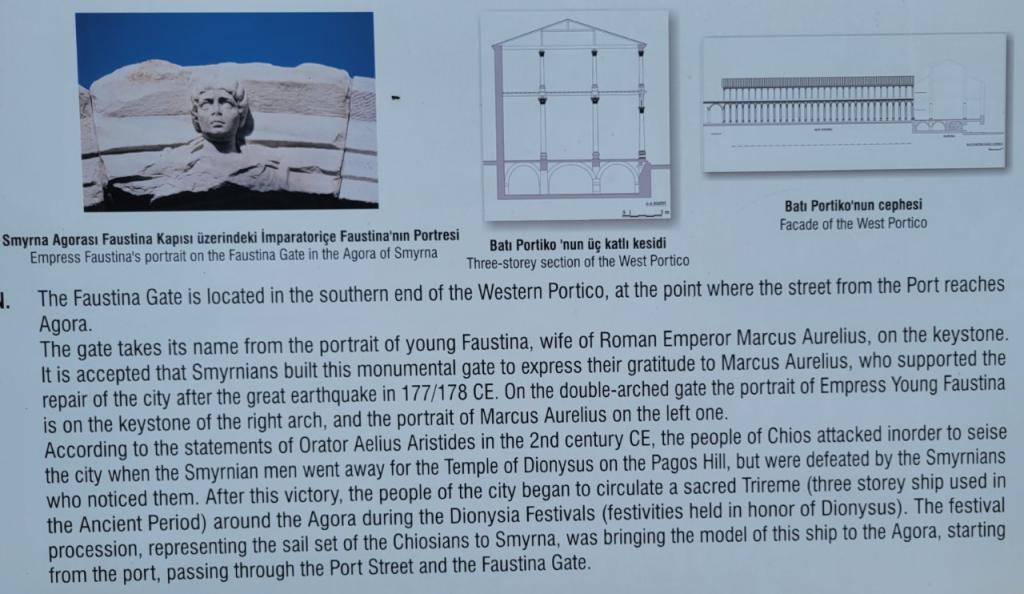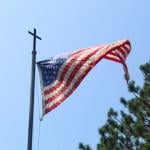Modern day Izmir is in fact Biblical Smyrna, where Polycarp was martyred and died in about 155 A.D., and before that we hear about the troubles of the church there in Rev. 2.8-10 speaks already in the 90s A.D. about the suffering of this church which is financially strapped, but spiritually rich. Today, the most important dig is at the ancient agora, and we will visit it now.
Izmir today is a large port city of about 4.5 million people. It is the second largest city in Turkiye. Here are some shots from the acropolis of the city and the harbor today.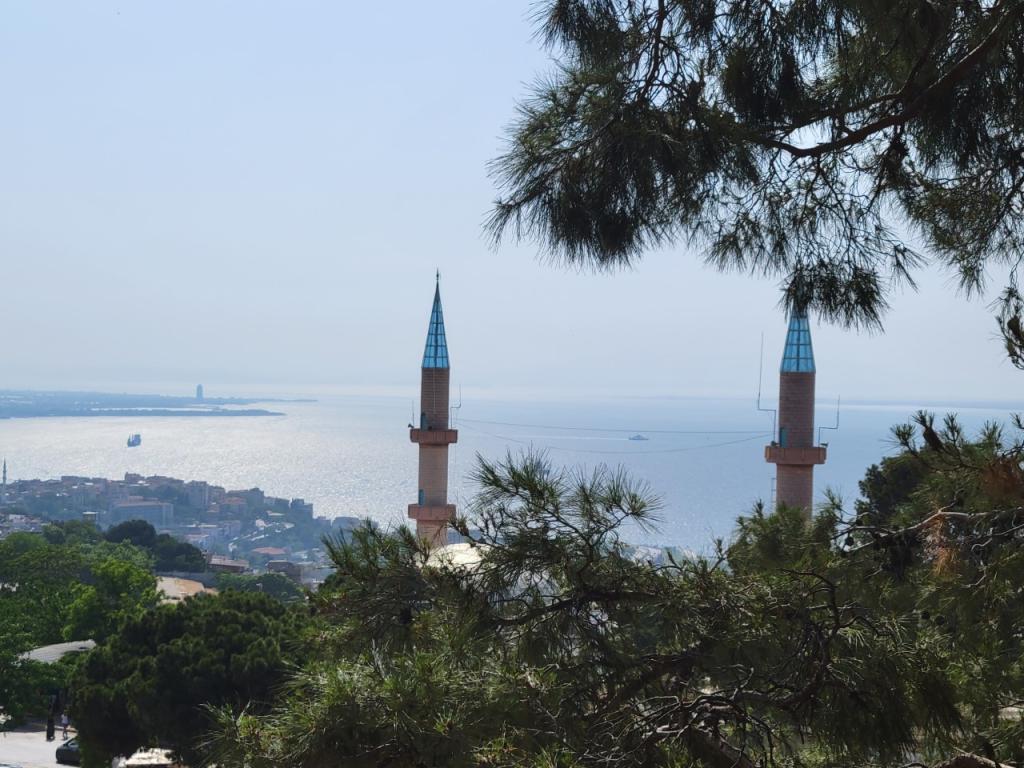
The fortifications at the acropolis date to the Hellenistic era, and according to one tradition Alexander the Great had something to do with this city.
Much of this has been restored and you can tell this because the red brick demarcations you see at the bottom of this shot show the part below which is original and above which is restoration.
According to the second century Greek writer, Pausanias Alexander the Great had something to do with the founding of this city, first up here on Pagos Hill, i.e. the Areopagos— the high city. Here is the story…
Our real focus must however be on the agora excavation below, next to where the harbor once reached. Today, the coastline is considerably further out than it was in antiquity as is of course the case at Ephesus and Miletus and elsewhere as well. Today that agora is on a busy city street.
Here’s a schematic that gives you some sense of where it was and is….
Here is my guide and good friend Meltem with Akin Ersoy, the archaeologist in charge of the dig.
We were allowed to go down to ancient ground level and see various things, but were not allow to take pictures of the graffiti which has caused something of a sensation, not least because there may be some early Christian symbols like the ichthus/fish symbol, as well as crude drawings of ships and gladiators.
Here is both the description and what the lower level looks like….
There were originally shops down here and the graffiti is on the wall at the back of several shops. Notice also the water channel running down the middle of this street. Nevertheless, Roger Bagnall has taken pictures and analyzed the graffiti in some detail…. here’s his book,
 And here are some of the pictures taken by various scholars of the graffiti…
And here are some of the pictures taken by various scholars of the graffiti…
This is the ancient ship graffito.
This is the gladiator graffito. Some of the graffiti below involve inscriptions or perhaps a crossword sort of puzzle as well as images…
Notice that the Christian graffiti mentioned at the end of this sign refer to things posted in the third and fourth centuries probably.
Also down below we see the freshwater spring, and the water channels which served parts of the ancient city including the agora market.
Above ground there is as well much to see, and right away you can tell this is a work in progress, as there are many columns and parts to reassemble, or at least make sense of.
And we got lucky and were there when there were musicians practicing…
Turkiye has been a country plagued with earthquakes throughout its long history, and those affected this coastal region. One huge one leveled Ephesus and did severe damage to Smyrna as well. There were earthquakes in A.D. 17 and 23 that affected Ephesus, and did serious damage as far inland as Sardis. But the ones that closed the show at Ephesus were in the 6th and 7th centuries A.D. I bring this up because we have an honorific inscription found here in the Izmir agora that honors someone who helped the city recover after an earthquake… Here’s the original,
And here is what it says…
This seems to be a response to the great earthquake of 177 A.D…
There was a large basilica which houses shops and also a celebratory arch, honoring Faustina….


